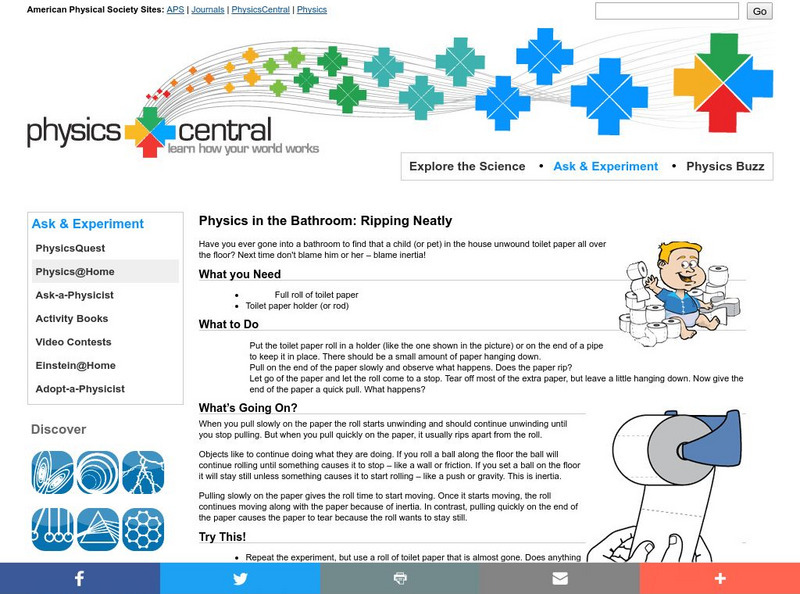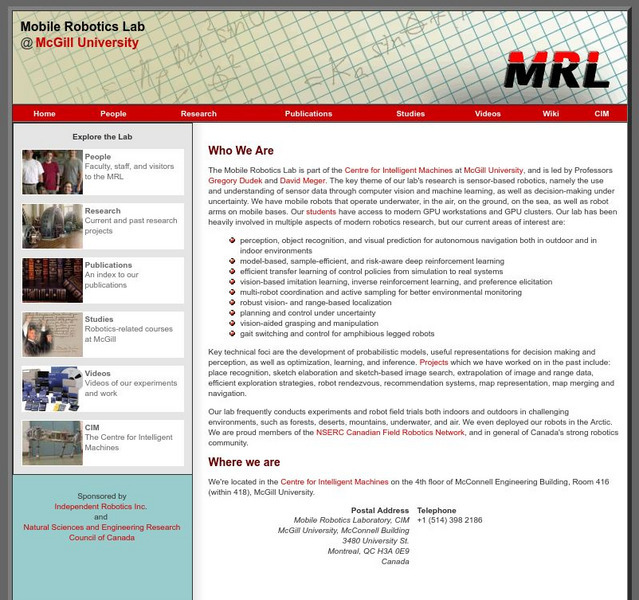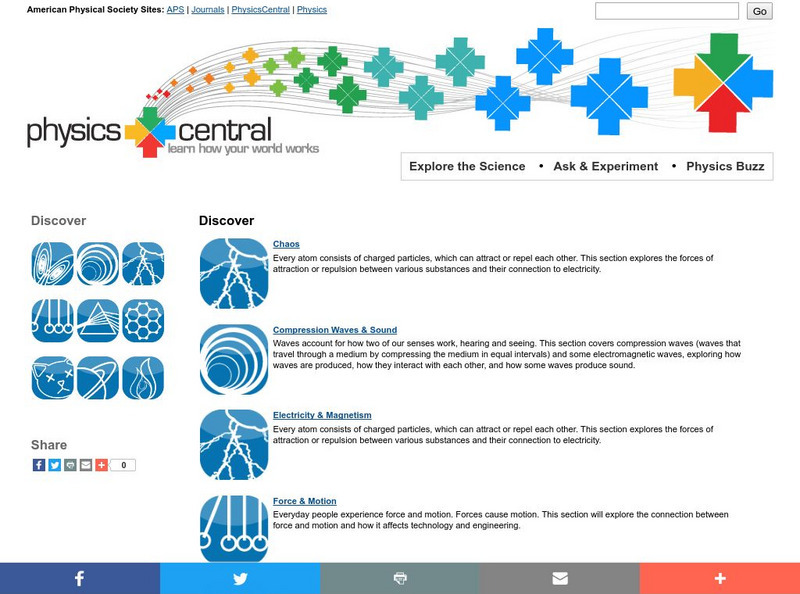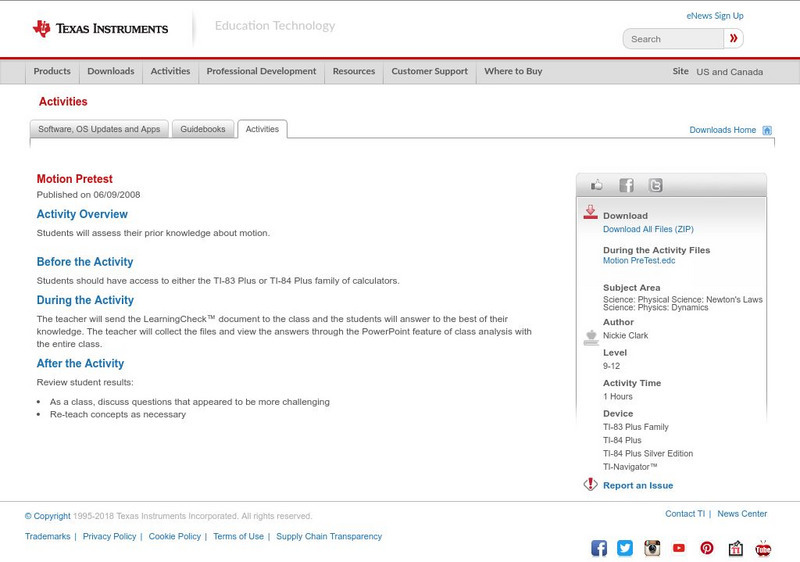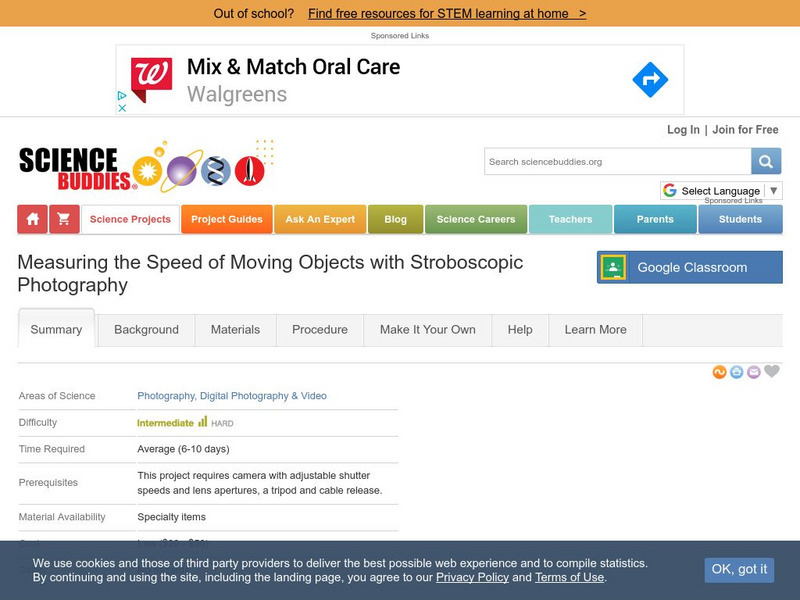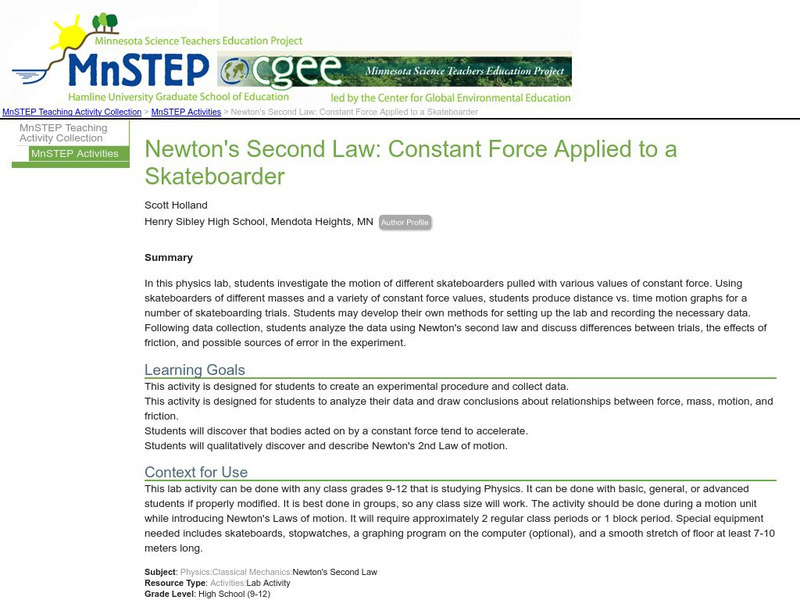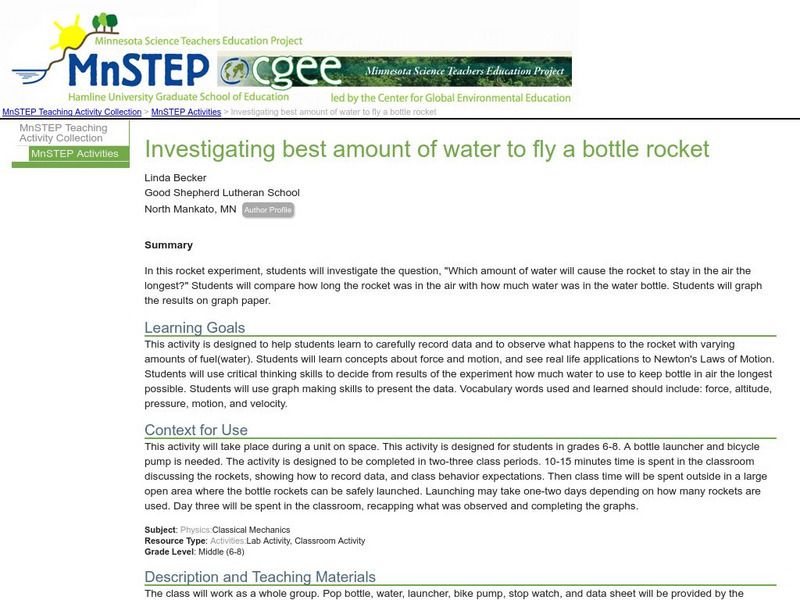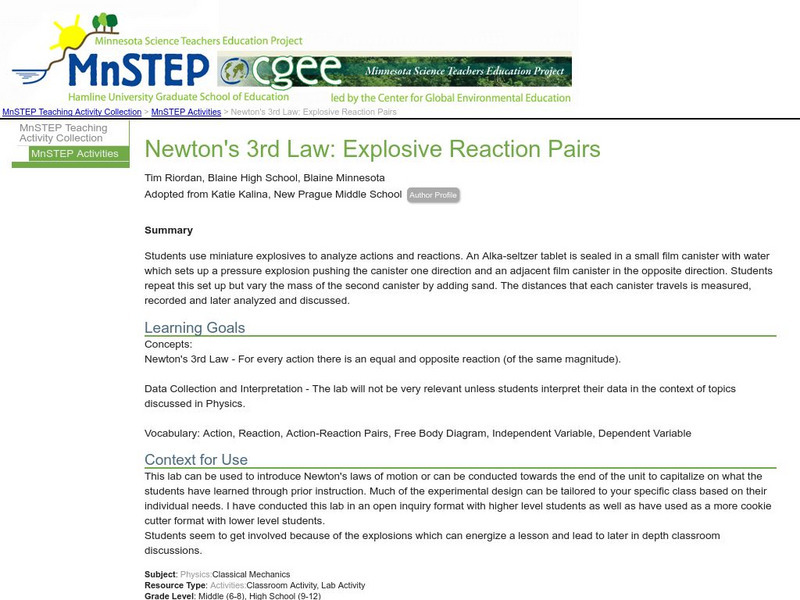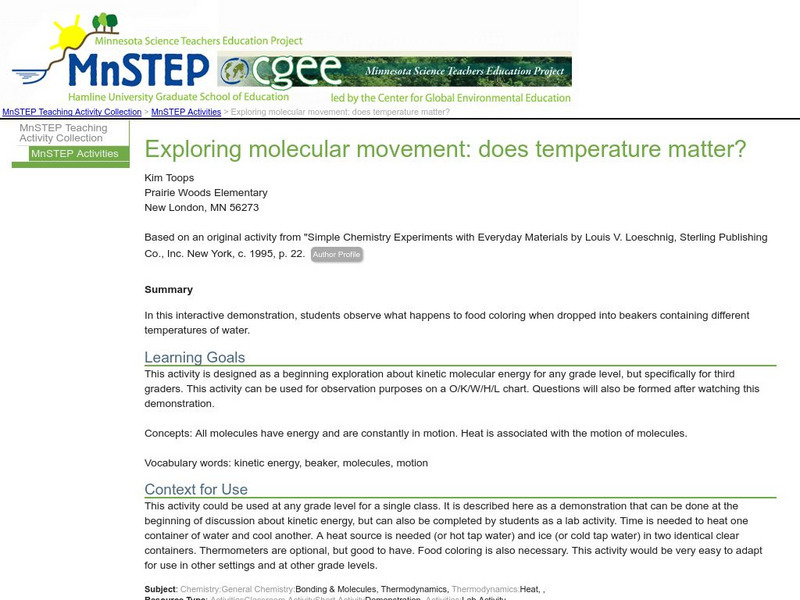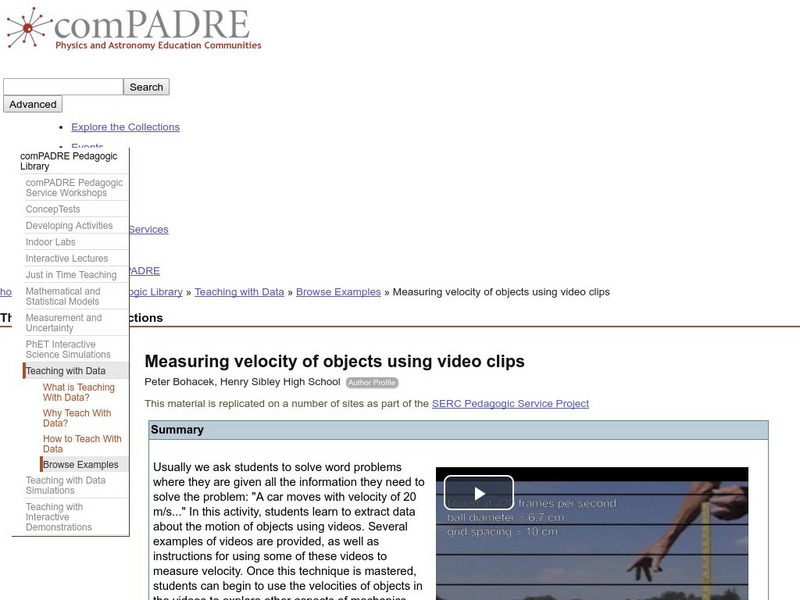Hi, what do you want to do?
Physics Central
Physics Central: Physics in the Bathroom: Ripping Neatly
A great science experiment to demonstrate Newton's First Law of Motion, inertia. There is a step-by-step guide on how to conduct this experiment and links to other sites about inertia.
McGill University
Mc Gill University: Mrl Research Projects
A wealth of information regarding the robotics projects at McGill University. Includes photos, video and informative text.
Physics Central
American Physical Society: Physics Central: Discover Homepage
Link to nine major physics topics and dig deeper into the content. Find out about the work of scientists in each field and see example physical science experiments.
Massachusetts Institute of Technology
Mit: Open Course Ware: Angular Momentum and Conservation
Students explore angular momentum and conservation. Some topics examined in the activities are angular momentum, torque, and conservation. The resource consists of video clips, lecture notes, practice problems, and exam questions....
E-learning for Kids
E Learning for Kids: Science: Greece: What Are Pushes and Pulls?
Nikos is cleaning up and organizing in his family's theater. He finds out that different movements need different motions; sometimes a push, and sometimes a pull. Help him figure out which force to use.
E-learning for Kids
E Learning for Kids: Science: Indian Ocean: Pirates: What Makes Things Move?
Join Pirates Slim Jim and Easy Finn on their boat. There, learn more about how to move objects.
Rice University
Rice University: Galileo's Pendulum Experiments
This site from The Galileo Project of the Rice University provides a great look into the pendulum experimens of Galileo. Contains first-hand writings and examples of experiments along with links to additional information.
Texas Instruments
Texas Instruments: Frictional Forces
In this activity, students' will use a Dual range force sensor to measure the force required to pull a block across different surfaces. They will examine the results to see when more force is needed to move the block and understand the...
Texas Instruments
Texas Instruments: Motion Pretest
Students will take a pretest to assess their knowledge about motion in a physical science class.
Science Buddies
Science Buddies: Measuring Speed of Moving Objects With Stroboscopic Photography
A strobe light can illuminate an entire room in just tens of microseconds. Inexpensive strobe lights can flash up to 10 or 20 times per second. This project shows you how to use stroboscopic photography to analyze motion.
Science Education Resource Center at Carleton College
Serc: Newton's Second Law: Constant Force Applied to a Skateboarder
In this lab activity, students will become familiar with Newton's 2nd Law of Motion. By investigating the motion of different skateboarders pulled with a variety of constant force values, they will discover that bodies acted on by a...
Science Education Resource Center at Carleton College
Serc: Investigating Best Amount of Water to Fly a Bottle Rocket
In this rocket experiment, middle schoolers will investigate the question, "Which amount of water will cause the rocket to stay in the air the longest?" Students will compare how long the rocket was in the air with how much water was in...
Science Education Resource Center at Carleton College
Serc: Balloon Rockets in 1 D
For this inquiry activity, students solve a 1D motion challenge in groups. Students build their own balloon rocket from the materials provided with little guidance from the instructor. They collect data and use it to prepare a position...
Science Education Resource Center at Carleton College
Serc: Bumps and Buckles: A Lesson on Motion
In this physics lesson, the students will be learning that motion can be changed when a car goes down a ramp. By adding "speed bumps" in different lengths away from the ramp, they will observe what happens to their car. Students will...
Science Education Resource Center at Carleton College
Serc: Marble Stop
In this two-part lesson, students will discover that no matter what the shape of the track, the marble will rise to the same vertical height. They will begin to understand the concepts of gravity, motion, and force.
Science Education Resource Center at Carleton College
Serc: Newton's 3rd Law: Explosive Reaction Pairs
This lab can be used to introduce Newton's 3rd Law of motion - For every action there is an equal and opposite reaction (of the same magnitude). In this exercise, students use miniature explosives to analyze actions and reactions.
Science Education Resource Center at Carleton College
Serc: Motion: Speed of Automobiles
In this activity, students will determine the speed of a moving vehicle using a stopwatch and meter stick, then convert the measurement from meters/sec to miles/hr. After completing this activity, students should understand average...
Science Education Resource Center at Carleton College
Serc: Investigating Movement of Tops
Students will raise questions about the way tops move by observing, through exploration/inquiry time, what they are made of, how the shape of each top affects its movement and what surface is best for a top to spin longest. As they...
Science Education Resource Center at Carleton College
Serc: Investigating Inertia
In this investigation, young scholars will perform a simple ordering activity and demonstration to determine what inertia is and recognize how inertia affects objects. They will compare and contrast the masses of objects to predict the...
Science Education Resource Center at Carleton College
Serc: Investigating Motion: Paths of a Marble
In this activity, children will investigate the paths that marbles take once set into motion and then how to change those paths, noting if and how they change.
Science Education Resource Center at Carleton College
Serc: Exploring Molecular Movement: Does Temperature Matter?
In this interactive demonstration, students observe what happens to food coloring when dropped into beakers containing different temperatures of water.
Science Education Resource Center at Carleton College
Serc: Using Your Marbles: Making Energy Work for You
This activity is based on the common experiment of running a marble down a ramp to do work on a cup. Learners will be able to see the relationship between mass and energy of the marble and the ramp height.
Science Education Resource Center at Carleton College
Serc: Graph Predictions for Position, Velocity and Acceleration
Students interactively create predictions of position, velocity, and acceleration graphs using java applets. The applets automatically classify student answers, so instructors can create graphs of student predictions.
Science Education Resource Center at Carleton College
Serc: Measuring Velocity of Objects Using Video Clips
In this activity, young scholars learn to analyze video clips and extract data about the velocity of moving objects, reinforcing the concept of average velocity. After mastering the technique of using videos to measure velocity, students...





